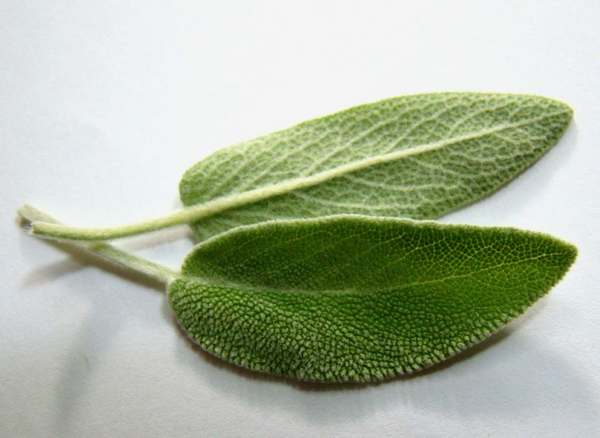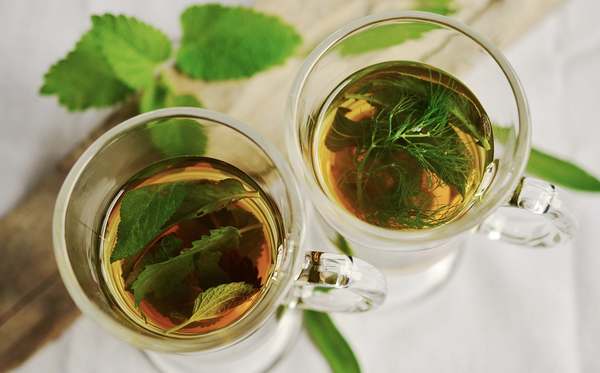Sage is an evergreen plant belonging to the Lamiaceae family. The most common species in vegetable gardens and gardens is Salvia officinalis. Since it is very resistant, sage is really easy to grow both in pots and in the garden, so you can always have it on hand for use in the kitchen and for your natural remedies.
Don't store avocado like this: it's dangerous
Sage is an evergreen plant belonging to the Lamiaceae family. The most common species in vegetable gardens and gardens is the Salvia officinalis. Since it is very resistant, the sage is really easy to grow both in pots and in the garden, so you can always have it at hand to use in the kitchen and for yours natural remedies.
Among beneficial properties of sage, which are really numerous you will discover that this aromatic and medicinal plant is the best friend of women as regards health and that preparing a sage-based decoction is really easy, just have fresh sage leaves available
Here are the beneficial properties of sage from the point of view of health and beauty, as well as for hair care and to promote digestion, without forgetting the recipe of the famous sage pancakes (but without eggs).
Index
Sage, healing properties
Sage has been known since ancient times for its to the healing properties. It has, in particular, antioxidant and hypo-glycemic properties, as well as antibacterial. Sage also has anti-inflammatory and digestive properties.
Maybe you didn't know that sage is a medicinal plant friend of women because its properties make it useful for relieving the symptoms of painful menstruation and in the case of typical menopausal disorders, such as caldane.
Read also: SALVIA, WOMEN'S ALLIED GRASS
It is also useful for the care of gingivitis and abscesses and to counteract edema and water retention. Sage is therefore not just a plant to be used in the kitchen to flavor our dishes.
Watch the dietitian's video e nutritionist Simona Dongiovanni that tells us about sage and its to the healing properties.
Sage, cosmetic properties
Sage is our ally in beauty care. Grandma's remedies tell us to rub fresh sage leaves on our teeth to keep them white. Sage has antibacterial and deodorant properties. You can add fresh or dried sage to the water of the bath or foot bath for a relaxing bath. In addition, dried sage reduced to powder is suitable as an ingredient to be included in recipes for homemade deodorants and toothpastes.
Read also: 10 BEAUTY PLANTS
Sage, properties for hair
Sage is considered a useful natural remedy for strengthening hair. For example, you can prepare a decoction of sage to rub the scalp or to be used after shampooing as the penultimate rinse when washing your hair. Adding a few drops of sage essential oil to your shampoo can help with oily hair. Finally, a grandmother's remedy is the infusion or decoction of strong sage useful as a compress to be applied on the hair to try to mask the first white hair.
Read also: STRENGTHENING THE HAIR: FOODS AND NATURAL REMEDIES

Mother tincture of sage
La mother tincture of sage is a herbal preparation recommended for the well-being of the respiratory tract, to improve digestive function, to counteract the symptoms of menopause and to regulate the sweating process. It has tonic and antioxidant properties.
It is a hydroalcoholic solution that is used in drops diluted in water for external use or for internal use. The methods of administration and the quantities to be taken vary from case to case, so to know them you will have to contact your trusted herbalist explaining your health problems.
Read also: HOW AND WHY TO PREPARE A HERBAL TINT
Sage essential oil
THEsage essential oil it is a precious ally for women especially from the point of view of psycho-physical well-being. Sage essential oil is very powerful and is mainly recommended for external use. Internal use is recommended only under medical prescription and with the guidance of an expert. It should be avoided during pregnancy and while breastfeeding.
The simplest use for sage essential oil is to create a massage oil. You can ask the herbalist to prepare a massage oil with sage essential oil and sweet almond oil to be used in case of menstrual pain and to counteract swelling affecting the legs and ankles.
Read also: ESSENTIAL OILS FROM AROMATIC HERBS: BASIL, ROSEMARY AND SAGE

Sage decoction
Sage decoction is a very simple preparation. It is prepared with the fresh sage leaves. The sage decoction has benefits to promote digestion and to stimulate diuresis. To increase the diuretic properties of sage you can add three or four slices of lemon. You can drink half a liter during the day according to the indications of the dietician and nutritionist Simona Dongiovanni.
7 or 8 fresh sage leaves
500 ml of water
4 or 5 lemon slices (for a diuretic decoction)
Bring the fresh sage to a boil together with the water in a saucepan. Add lemon slices if you want to get a diuretic effect. Let it simmer for about ten minutes and strain. You can drink the decoction during the day, even warm or cold, or keep it in a thermos. If necessary, sweeten the sage decoction as you prefer, preferably with a natural sweetener (rice syrup, for example).
Fried sage, the recipe
To make the preparation of the Fried sage or delle sage pancakes we can avoid using eggs among the ingredients and prepare the batter only with water, flour and a pinch of salt. You can use wheat flour or chickpea flour for your batter. The recommendation is to choose extra virgin olive oil for frying.
- 10-15 fresh sage leaves
- 50 grams of wheat or chickpea flour
- Cold water to taste
- 1 pinch of salt
- Fry oil
Collect, wash and dry the sage. In a bowl pour the flour together with a pinch of salt and add cold water little by little, stirring with a fork until form a batter densto. If you want more swollen sage pancakes you could use sparkling water or add a pinch of baking soda or baking powder. Dip the sage leaves in the batter, cover them well and fry them in hot oil until golden brown. Heating the oil to the right point is important because this way your sage pancakes will be crunchy and not greasy. Enjoy the sage pancakes while they are still hot. An extra touch for your recipe? Add a pinch of turmeric to the batter, just a tip of a teaspoon.
Marta Albè


























